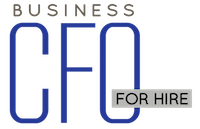Back office software, like accounting systems, CRMs, ERP platforms, and scheduling tools—is designed to improve efficiency, reduce costs, and support growth. But what’s the cost of underutilized software when these tools aren’t fully optimized or properly implemented? From a CFO’s perspective, the financial impact of this misalignment is significant and often hidden, affecting everything from labor costs to decision-making and overall profitability. significant and often hidden.

Operational Inefficiencies and Costly Workarounds
When systems don’t work well together, teams resort to manual tasks, like double data entry or reconciling errors. This drains productivity and inflates payroll. One business uncovered more than $8,000 in monthly inefficiency due to underutilized tools—costs that compounded over time.
CFO insight: Labor waste from poor software use isn’t just about time, it’s about missed growth. Every hour spent fixing problems is an hour not spent scaling the business.
Disconnected Systems and Data Silos
When your CRM doesn’t talk to your accounting software, you create silos that lead to reporting errors, decision-making delays, and compliance risk. Manual workarounds to close these gaps slow down the business and frustrate teams.
Missing Out on AI and Automation
Businesses that fail to leverage AI and automation features built into modern software lose out on efficiency, forecasting, and insight. CFOs see this as a missed opportunity to reduce staffing costs, improve accuracy, and increase strategic agility.
Overstaffing and Error Costs
Without automation, manual processes drive the need for more staff, leading to bloated payroll. And as workflows bottleneck, error rates climb. Mistakes in billing or scheduling can directly hit customer experience and bottom-line revenue.
The Real Impact of Misaligned Tools
Software that isn’t scalable or customizable forces businesses into costly workarounds. Many standard systems lack real-time analytics or forecasting, limiting a CFO’s ability to plan effectively.
From a financial leadership perspective, the question isn’t just what software costs—but what’s the cost of underutilized software? It’s not uncommon to see thousands lost each month in inefficiency, labor, and missed opportunities. Fractional CFOs often uncover these gaps and lead the charge in selecting and optimizing tools that match the company’s growth stage and goals.
Hidden Costs to Watch For:
- Labor inefficiency from manual tasks and rework
- Decision delays due to data inconsistencies
- Compliance penalties from reporting or data errors
- Unused technology features with no ROI
- Scalability issues that restrict growth
To start identifying these issues, begin with a tech stack audit, evaluate each software tool in use and assess whether it’s being fully utilized or duplicated elsewhere. Talk to team members who use the tools daily to uncover pain points, inefficiencies, and manual workarounds. Review key processes like invoicing, reporting, and scheduling to spot where automation could be introduced. A fractional CFO can guide this process, helping you map current software usage to business goals and highlight where upgrades or consolidations are needed.
Knowing what’s the cost of underutilized software is essential for protecting profitability and setting the foundation for smart, scalable operations. For CFOs, optimizing tech stack alignment is no longer optional—it’s a financial imperative.
